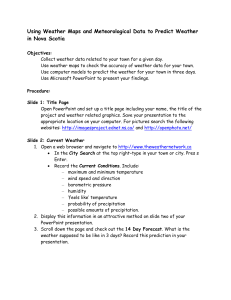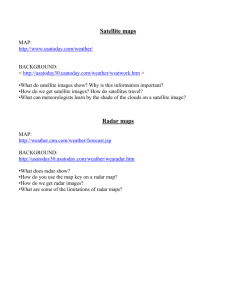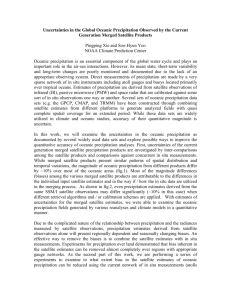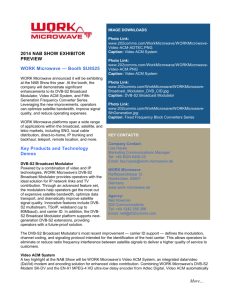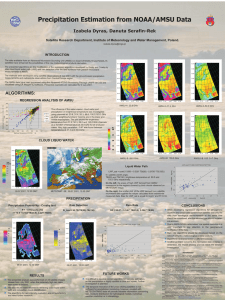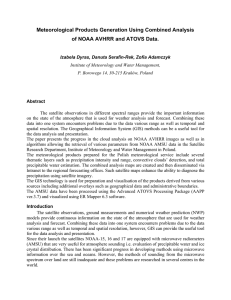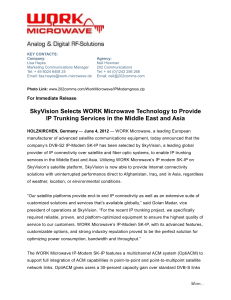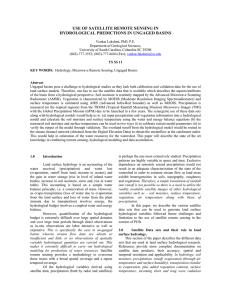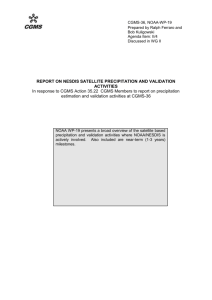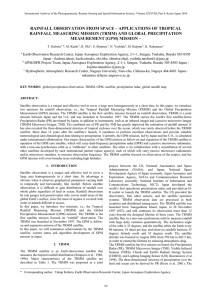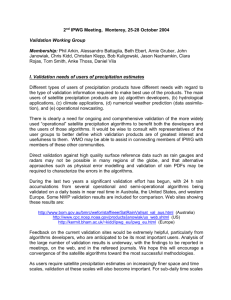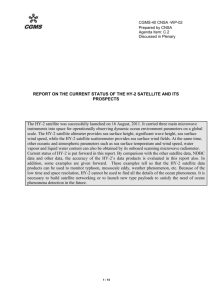SATELLITE PRECIPITATION PRODUCTS IN THE FRAME OF THE
advertisement
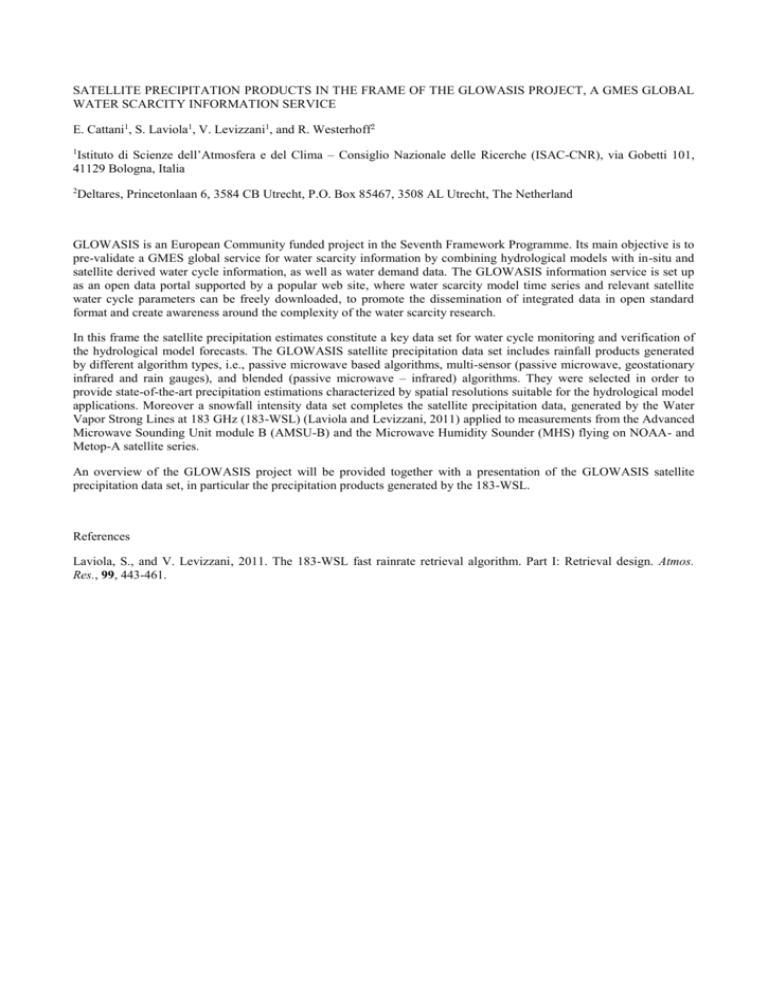
SATELLITE PRECIPITATION PRODUCTS IN THE FRAME OF THE GLOWASIS PROJECT, A GMES GLOBAL WATER SCARCITY INFORMATION SERVICE E. Cattani1, S. Laviola1, V. Levizzani1, and R. Westerhoff2 Istituto di Scienze dell’Atmosfera e del Clima – Consiglio Nazionale delle Ricerche (ISAC-CNR), via Gobetti 101, 41129 Bologna, Italia 1 2 Deltares, Princetonlaan 6, 3584 CB Utrecht, P.O. Box 85467, 3508 AL Utrecht, The Netherland GLOWASIS is an European Community funded project in the Seventh Framework Programme. Its main objective is to pre-validate a GMES global service for water scarcity information by combining hydrological models with in-situ and satellite derived water cycle information, as well as water demand data. The GLOWASIS information service is set up as an open data portal supported by a popular web site, where water scarcity model time series and relevant satellite water cycle parameters can be freely downloaded, to promote the dissemination of integrated data in open standard format and create awareness around the complexity of the water scarcity research. In this frame the satellite precipitation estimates constitute a key data set for water cycle monitoring and verification of the hydrological model forecasts. The GLOWASIS satellite precipitation data set includes rainfall products generated by different algorithm types, i.e., passive microwave based algorithms, multi-sensor (passive microwave, geostationary infrared and rain gauges), and blended (passive microwave – infrared) algorithms. They were selected in order to provide state-of-the-art precipitation estimations characterized by spatial resolutions suitable for the hydrological model applications. Moreover a snowfall intensity data set completes the satellite precipitation data, generated by the Water Vapor Strong Lines at 183 GHz (183-WSL) (Laviola and Levizzani, 2011) applied to measurements from the Advanced Microwave Sounding Unit module B (AMSU-B) and the Microwave Humidity Sounder (MHS) flying on NOAA- and Metop-A satellite series. An overview of the GLOWASIS project will be provided together with a presentation of the GLOWASIS satellite precipitation data set, in particular the precipitation products generated by the 183-WSL. References Laviola, S., and V. Levizzani, 2011. The 183-WSL fast rainrate retrieval algorithm. Part I: Retrieval design. Atmos. Res., 99, 443-461.





